Inside West Virginia’s Chernobyl
A highly radioactive oil and gas facility has become a party spot in Marion County.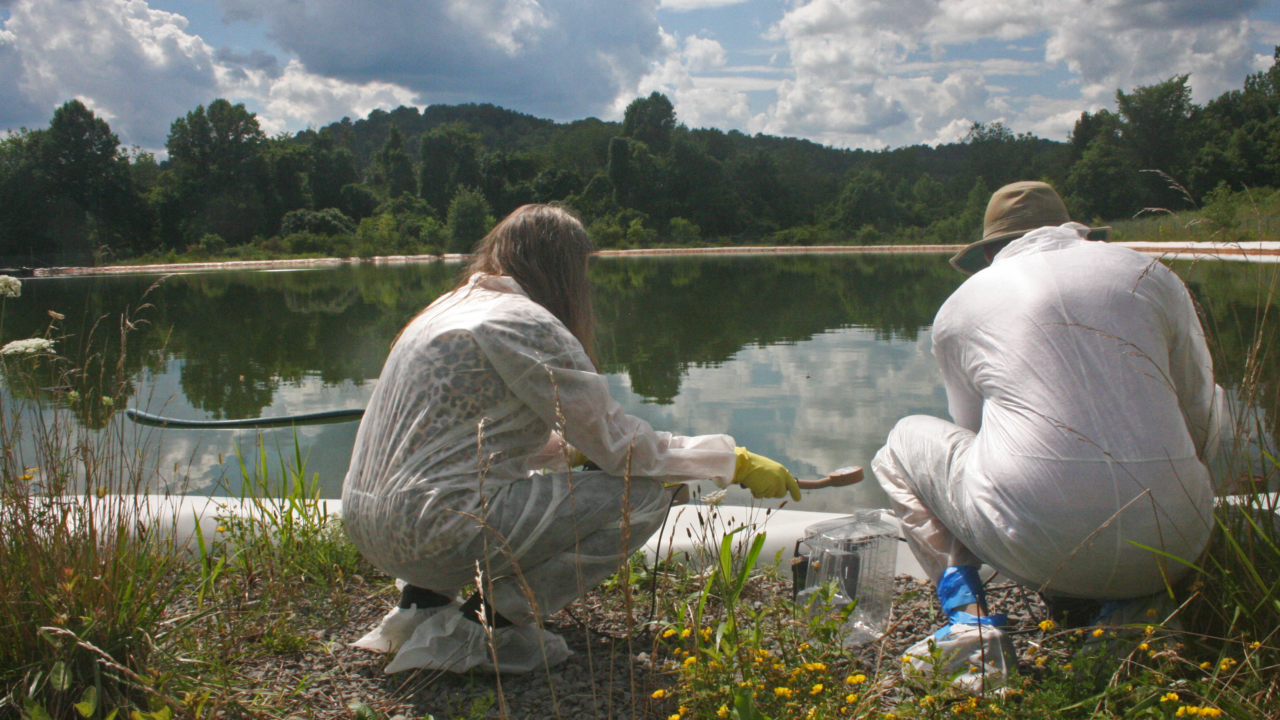 Dr. Yuri Gorby and Jill Hunkler sample water from a pond of fracking wastewater abandoned on one side of the facility. Samples sent to Eberline Analytical, a radiological analysis lab in Oak Ridge, Tennessee, showed elevated levels of radium, thorium, bismuth and radioactive lead. (Photo: Justin Nobel)
Dr. Yuri Gorby and Jill Hunkler sample water from a pond of fracking wastewater abandoned on one side of the facility. Samples sent to Eberline Analytical, a radiological analysis lab in Oak Ridge, Tennessee, showed elevated levels of radium, thorium, bismuth and radioactive lead. (Photo: Justin Nobel)
2024 Headliner Award: Third Place, Online Investigative Reporting for Digital-Only Website
It’s around 4 p.m. one fine summer afternoon on a West Virginia hilltop when Dr. Yuri Gorby, a former Department of Energy scientist, gets the first clicks on his Geiger counter. He is wearing a full-body plastic protective suit, and using the device to survey a span of odd brownish dirt near the dilapidated main building of Fairmont Brine Processing, a fracking waste treatment plant that ceased operations in 2017.
“These are the highest readings I’ve ever seen!” he shouts. “You want to come over here!”
I follow Ohio organizer Jill Hunkler past a graffiti-covered security shack and a vaguely Satanic-looking circle of busted up furniture to find the 62-year-old scientist wearing a look of deep concern. The clicking — hauntingly familiar from Hollywood depictions of Chernobyl and post-Apocalyptic scenarios — continues to quicken as Gorby walks toward the flame-scarred husk of the frack waste processing building. Bending over the odd brownish dirt, the clicks become furious beeps, like a smoke alarm gone haywire, before merging into a high-pitched wail, a sound reminiscent of an emergency room patient flatlining. Gorby freezes. A microbiologist who worked for years at a federal radiological lab in Washington state, he understands very well the meaning of the nerve-rattling screech.
“The unit is maxed out,” he says.
His Geiger counter, known as the Ludlum 3000 Digital Survey Meter, is reading around 7,000 counts per minute, or just under 2 millirems per hour. Working at those levels for one week (never mind the 70- or 80-hour weeks common in the oil and gas industry) could take a worker over yearly safety limits set by the Nuclear Regulatory Commission.
These people have no idea they are living beside a fracking waste treatment plant.
The radioactive dirt is far from the day’s only disturbing discovery. The moat of scuzzy water surrounding the processing building also reads radioactive. So, too, the mud that coats the floor of a second building, littered with empty beer cans that testify to the site’s popularity as a party spot, presumably for local teenagers. “Kids are screwing there,” a former oilfield worker would later tell me, pointing to a soiled mattress, with the authority of an Appalachian who grew up partying at shuttered industrial sites. Indeed, condoms litter the facility grounds.
Opposite the treatment building, a pond of radioactive water is contained by a grimy white liner stained orange from the metals in the brine. Near it, in the unloading area, we find a crumpled bathing suit. “My god,” says Hunkler, “did they go swimming!?” And on the other side of the unloading area, rows of gigantic red, blue and green containers known as frack tanks send the Geiger counter into another string of beeps. Next to the tanks are a set of open dumpsters filled with bags of trash, metal scraps and wet heaps of yellowish-white goop that resembles oatmeal. “I hope you didn’t touch that?” says Gorby of the goop. “It’s highly radioactive.”
That dirt and water samples from Fairmont Brine Processing reveal “deeply concerning” levels of radioactive materials — radium, thorium, polonium, bismuth and various isotopes of radioactive lead — would be news to the vast majority of people in Fairmount, West Virginia, the largest town in Marion County. When it rains, runoff from the site flows down the hill and toward Fairmont’s 18,000 residents. The homes are not only visible from the abandoned plant, they are so close you can hear their lawn mowers and the barking of their dogs. These people have no idea they are living beside a fracking waste treatment plant so radioactive that a levelheaded Homeland Security official, adhering to counterterrorism protocols, would order the place wrapped in tape and direct the nearest radiological SWAT team to round up the bad actors responsible for the mess. Nor do the towns further to the north know that the runoff threatens to contaminate the Monongahela River, which flows into Pennsylvania and provides drinking water for Pittsburgh.
During six years researching my forthcoming book about oil- and gas-field radioactivity, I have visited a number of such sketchy sites across the country. In Colorado’s Denver-Julesburg, a company called Mayberry Farms has spread oilfield waste directly on farmland; in the Permian oil patch of West Texas, a food stand offers tacos in the parking lot of a fracking wastewater disposal site; in a heavily fracked area south of Pittsburgh, a towering landfill of oilfield waste looms over a county fairground. But Fairmont Brine is like nothing that I — or Gorby, who has spent the last decade helping environmental groups track radioactive oilfield contamination — have ever seen. In the booming gas-field that is the Marcellus-Utica, the industry has been granted so many exemptions, government regulators are so ineffectual and human health and safety is of so little value, that somehow a miniature Chernobyl has been created and left unattended, its radioactive dust and dirt freely blowing in the breeze, just outside the city limits of an American college town. There are no gates, no guards, not even a “No Trespassing” sign. The numerous small yellow notices with radioactivity symbols planted on fences, telephone poles and random equipment, blend into the site’s colorful graffiti, just more detritus in a toxic dump.
Over the course of three separate visits this summer, Gorby, Hunkler, myself and a Pittsburgh filmmaker named Colin Sheehy entered the site unencumbered — just as countless locals and scrappers have done before us. On each of our visits, the busted-up furniture was arranged in a different manner, suggesting the site’s ongoing interest to local visitors.
But unlike them, we arrived armed with protective suits and facemasks, knowledge about radioactivity, and a fancy Geiger counter.
“This is how the industry operates — they just go away and leave the mess,” says Hunkler, director of Ohio Valley Allies, a grassroots group active in communities threatened by fracking across the Marcellus-Utica. “This is what’s going to happen everywhere.”
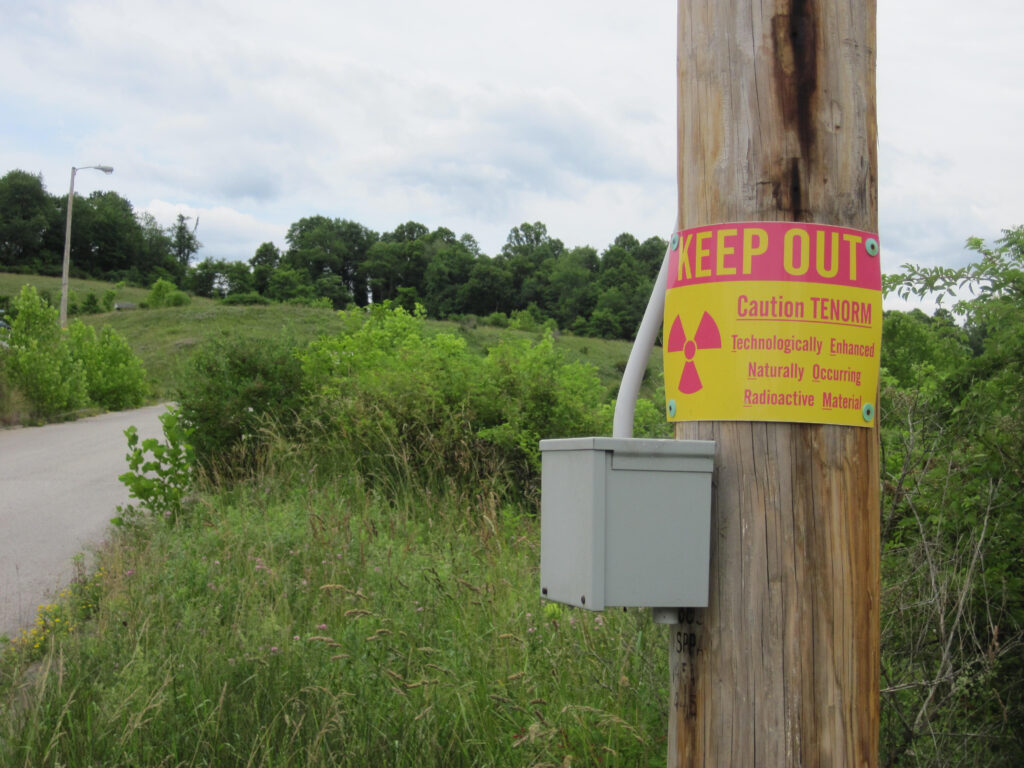
Most Americans do not realize that fuel is far from the only thing that comes to the surface at an oil or gas well, be it a modern fracked well, or an older conventional one. Every day, 2.9 billion gallons of toxic and often radioactive liquids are brought to the surface at oil and gas fields across the country. The industry has a number of innocent names for this waste: oilfield brine, produced water, salt water. Sometimes, they simply call it “water.” While it is natural, brine contains extraordinary levels of salts, toxic heavy metals like arsenic, lead and strontium. It can also be rich in the radioactive element radium.
Beginning in the 1860s and continuing into the 1980s, oilfield brine was simply dumped into unlined pits, ditches, creeks and bayous. Today, approximately 97% of it goes to controversial facilities called injection wells, where it’s shot into the deep earth. But injection wells cause earthquakes, and have recently been found to be leaking across Ohio and putting drinking water resources at risk. They have become increasingly despised by nearby communities. In response to growing public concerns, a shadowy network of facilities has sprouted across the nation to treat and process oilfield brine, transforming it, operators claim, into distilled water for new fracking operations, road salts, and even, according to the claims of one industry engineer, food-grade salt. However, the oil and gas industry, often shielded by state and federal regulators, has neglected to appropriately address the radioactivity found in brine.
A fracking waste treatment plant under the name AOP Clearwater first opened operations in Fairmont in 2009. The following year, an article in Marcellus Drilling News, an aggressively pro-industry news site, called the hilltop site “a big success.” The salt, according to one West Virginia business paper, was being sold “in Marion County to independent contractors and the city.” But by 2015, AOP Clearwater was gone. New Pittsburgh-based management, adopting the name Fairmont Brine Processing, filed plans with the state to operate a shipshape facility that “treats, cleans and recycles used brine water.” Salts removed from the brine were to be “sold as products,” though the details of these business transactions were not given. “Distilled water” produced by the plant would be sold to natural gas companies to frack new wells, or “discharged to the Monongahela River” under a federal permitting program intended to ensure toxic pollutants don’t enter waterways.
That program, the National Pollutant Discharge Elimination System, does not check for radioactivity.
Thanks to a 1980 amendment under the Resource Conservation and Recovery Act, known as the Bentsen and Bevill exemption, the agency has actually declared oilfield waste nonhazardous.
In October 2016, Fairmont Brine president Brian Kalt, speaking in front of the House Committee on Energy and Natural Resources at the Oklahoma state capitol, promoted his superior solution for disposing of the oil field’s wastewater. According to a 2016 article in the Pittsburgh Business Times, Fairmont had secured a $90 million credit “to build a new water processing and salt production operation” in southwestern Pennsylvania. But, apparently, the plan never came to fruition. “I am writing to inform you that Fairmont Brine Processing, LLC (Fairmont) does not have the cash flow to fulfill its obligations,” stated a letter to one of its vendors in February 2017, a month after the company suspended most of its operations.
At that point, the company had an even more serious issue on hand. In January 2016, the Kentucky Department of Environmental Protection learned that 47 sealed containers of radioactive oilfield waste had been illegally dumped at a landfill in eastern Kentucky separated from a high school and middle school by a state highway. The waste, reported the Louisville Courier-Journal, came from “a West Virginia company.” It was Fairmont Brine.
Another issue was the company’s air permit. Filed in 2016 with the West Virginia Department of Environmental Protection, radioactivity is mentioned only once in its 222 pages. That one reference, meanwhile, demonstrates an ignorance of basic radiation science. The permit application notes that the brine treated at the plant contains radium, but states that, because of the element’s long half-life, “there should not be significant radiation.” In reality, radium is a carcinogenic radioactive metal moderately soluble in water and known by the medical community as a “bone-seeker.” Once it gets inside a human body — by accidental inhalation as dust, ingestion in contaminated drinking water or workers with waste on their hands smoking a cigarette — some of it will lodge in the bones and can lead to lethal cancers. The main isotope of radium found in brine, radium-226, has a half-life of 1,600 years. Data from Pennsylvania shows Marcellus brine to be more radioactive than any other oil and gas field in the nation.
Does the West Virginia Department of Environmental Protection care that Fairmont Brine drastically underplayed radioactive elements in their permit applications? Apparently not. In 2019, department spokesperson Casey Korbini told me the agency is not monitoring for radioactivity at frack waste treatment plants. “This does not mean that radionuclides are prohibited,” Korbini said. “They are simply not regulated.” The Environmental Protection Agency, the agency has told me several times, does not regulate oilfield radioactivity at all. And thanks to a 1980 amendment under the Resource Conservation and Recovery Act, known as the Bentsen and Bevill exemption, the agency has actually declared oilfield waste nonhazardous.
The radioactive dangers of oilfield waste have long been known by the oil and gas industry. Treatment systems “must recognize the fact that radioactivity can not be modified or made inert by chemical means,” states a striking 1982 report of the American Petroleum Institute. Any attempt to remove radioactivity is merely transforming, “a very dilute source of radioactive materials into a very concentrated source.” In other words, if an operation succeeds in removing radioactivity from oilfield brine, they have merely created an even more dangerously potent radioactive mess. And what are they going to do with that?
Over the course of my reporting, I have asked the American Petroleum Institute detailed questions about radiation risks to the public and workers. “Protecting workers, individuals and the community who are near oil and natural gas operations is of paramount importance to the industry,” they told me in a 2019 correspondence. Member companies are “dedicated to implement internationally recognized standards and best practices which provide for safe work environments and the public safety.”
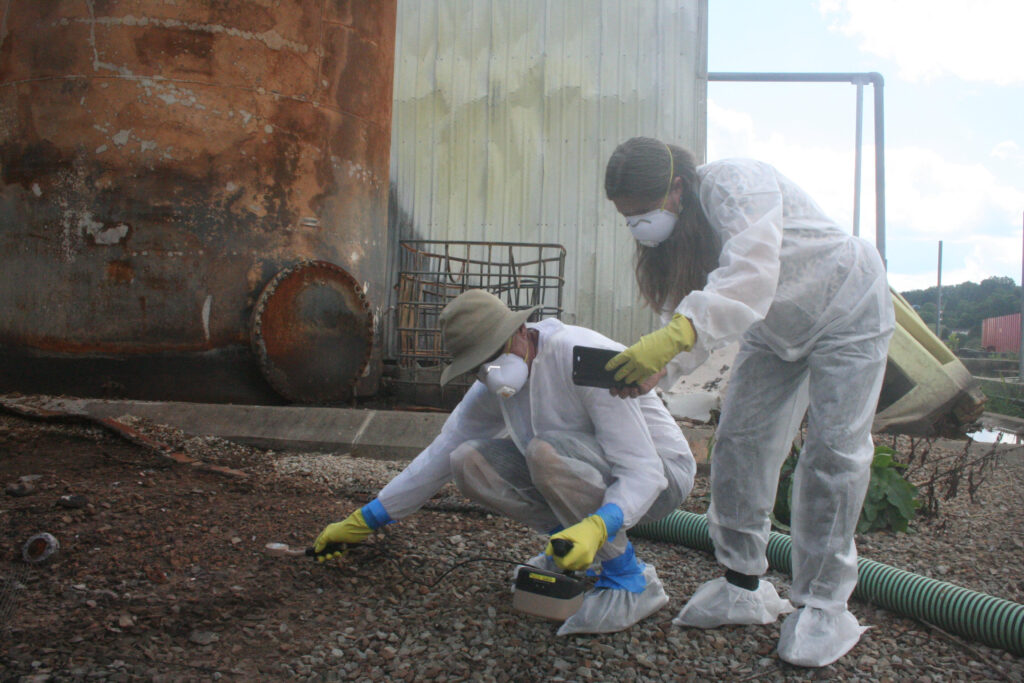
Just before 2 p.m. on May 30, 2023, a Tuesday afternoon, there was an explosion at the Fairmont Brine processing plant. According to the incident command log of the Marion County Department of Homeland Security & Emergency Management, a caller on Pennsylvania Avenue, near downtown, reported hearing “a bomb” and seeing “black smoke” coming from a two-story tan structure. First responders were swiftly on the scene. By 3:30 p.m., the West Virginia Department of Health & Human Resources had a radiological crew en route. Around the same time, the West Virginia Department of Environmental Protection advised the fire department, according to the incident command log, “the material at this site is radiological material, overhaul should be conducted with full hazmat gear and full respiratory precautions,” using Self-Contained Breathing Apparatus (SCBA’s). Personnel were advised to “remain upwind and avoid direct skin contact with this material.”
The message delivered the following day by the West Virginia Department of Environmental Protection (DEP) was very different. WBOY, a north central West Virginia television station, ran a story headlined, “DEP: Testing after Fairmont explosion showed no signs of contamination.” And WDTV, out of Bridgeport, issued an update titled, “No signs of contamination in area of plant fire in Marion County, DEP says.”
“When the companies are gone, who is going to pay for the cleanup? It is always the taxpayer.”
I have sent the DEP a list of questions about Fairmont Brine. What products were produced at the plant, and where were they used and sold? Were they ever tested for radioactivity? When, exactly, did Fairmont Brine Processing cease operating, who presently owns the site? What caused the May 30 explosion, and what sort of radioactivity testing was performed at the site to support the conclusion that there was no contamination?
DEP has not replied to any of my questions. I asked the Marion County Assessor’s office who currently owns the site, they didn’t know. When I emailed a list of questions to Brian Kalt, president of Fairmont Brine Processing, the email bounced. The number for the company is dead.
Only Whitney Wetzel, with the West Virginia Department of Health & Human Resources, took my questions seriously and issued replies.
The facility, she said, “is non-operational and the real estate itself is not owned by Fairmont Brine.” It was the understanding of the Department of Health & Human Resources “that Fairmont Brine was extracting the salts from the liquid waste to be sold as ‘road salt.’” The department’s Bureau for Public Health “found no evidence of increased radioactivity in the salts during site visits to the facility,” but do “not have records of the amount of salt produced or its final destination.”
How has a site so radioactive it sends a Geiger counter off the scales been left open for local kids to drink beer, go swimming, have sex and practice their graffiti? Wetzel told me that the Department of Health & Human Resources has performed “radiation surveys of specific materials” and “posted the fence line at the facility with ‘Caution: Radioactive Material’ signs.” Furthermore, she said, her agency, together with the DEP and EPA have plans “to develop a clean up solution at the facility” that “addresses public health and environmental hazards.”
Wetzel confirmed there are three registered oilfield waste treatment facilities operating in West Virginia, and that two others unregistered with the department have been shuttered. One of the latter is located in the panhandle of West Virginia near the Pennsylvania and Ohio borders; it was shut down after a fire caused by a space heater became a raging nighttime inferno and sent two workers to the hospital. (I wrote about that incident here.) Presently, said Wetzel, “there are two companies that have contacted [Bureau for Public Health] to inquire about the registration process” for opening new frack waste treatment plants in West Virginia.
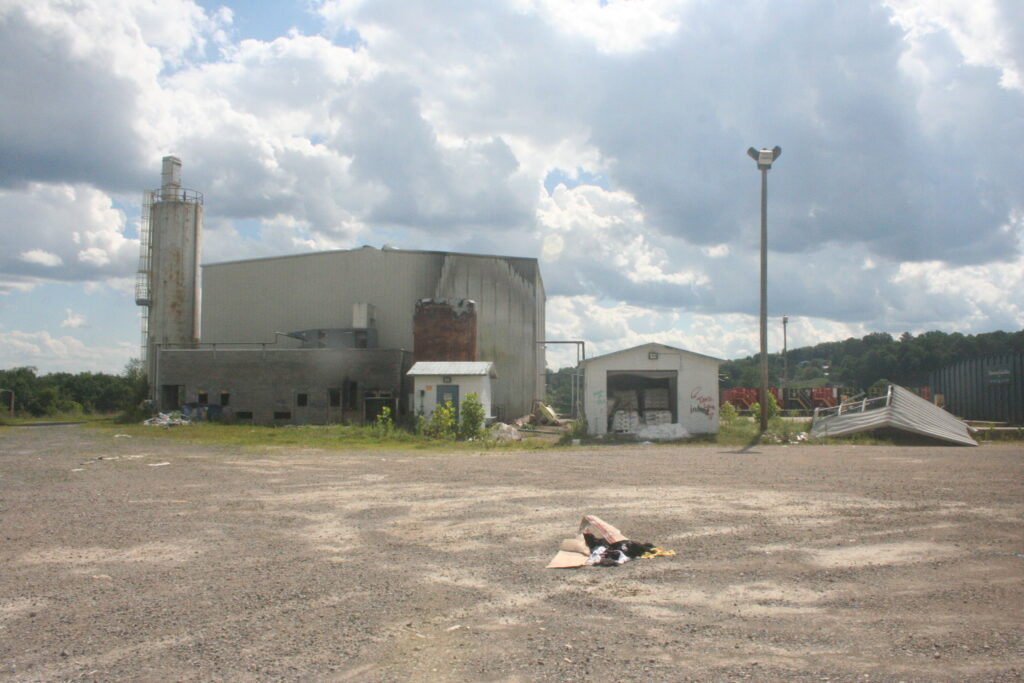
Appalachian area health and environmental advocacy groups are following these developments closely. They are particularly concerned with the proposal for a plant operated by Belmont Solids Control. The company already operates a frack waste plant in Ohio. “We specialize in oil & gas waste solidification” and “Industrial waste disposal,” their website states. Belmont Solids has not replied to questions concerning their plans for the radioactive waste that would be concentrated at the proposed West Virginia facility, nor their ideas about how to keep workers, the public and the environment free from radioactivity contamination.
“It is a slow rolling disaster,” said Leatra Harper, director of the Ohio-based FreshWater Accountability Project. “There are brownfield sites and empty buildings that nobody wants and can be repurposed to avoid liability. Our elected representatives allow the oil and gas industry to recklessly operate because they want the revenue, and they don’t want to hear that there are harms. Companies have been able to get away with murder because the Bentsen & Bevill exemption magically makes toxic, radioactive frack waste nonhazardous.”
“I don’t understand why the economic development people aren’t looking at the long-term impacts of this industry when nobody wants the waste,” she said. “When the companies are gone, who is going to pay for the cleanup? It is always the taxpayer.”
In the 1980s, the EPA established a cleanup standard of 5 picocuries per gram for radium. This limit applies at highly contaminated facilities like uranium mills and Superfund sites. The EPA settled on this number because their models show that regular human exposure to anything higher poses inappropriate health harms. And yet, levels of radium in the dirt that maxed out Gorby’s Geiger counter registered an astonishing 5,072 picocuries per gram — more than 1,000 times the EPA limit. Levels of bismuth and radioactive lead read at similarly high levels. Especially concerning for Gorby: the presence of 312 picocuries per gram of polonium-210, the same radioactive isotope Russian assassins used in 2006 to murder the former spy Alexander Litvinenko by placing an amount smaller than a grain of sand into his tea at a London bar.
Anyone partying at the site, or walking through contaminated dirt and mud, or salvaging copper, is “going to be getting dosed,” he says. “There are going to be long-term chronic effects from this.”
“That is a whole lot of polonium getting airborne and going down into the river and home on your shoes,” says Gorby. “You cannot detect it. It doesn’t have any smell. It doesn’t have any taste. Breathing it in is the worst thing. You breathe it in and it’s in your system.”
Whereas uranium can shut down your kidneys, says Gorby, and radium goes to the bone, polonium has been shown to concentrate in the liver, and also the blood, brain and testes. And anyone partying at the site, or walking through contaminated dirt and mud, or salvaging copper, is “going to be getting dosed,” he says. “There are going to be long-term chronic effects from this.”
“These are the hottest samples I’ve ever worked with in the field,” says Gorby, who spent years working at one of the nation’s most highly contaminated nuclear weapons production complexes. “If this was found at the Hanford [government] site, they would section off the area and you wouldn’t be allowed in. If you did go in, upon exiting you would take off all your protective clothing inside the contaminated area and put them into radioactive disposal bags until release by a radiation technician. If you came out and still had contamination on your regular clothes or hands, you would go through a decontamination process of stripping down, and scrubbing with soap.”
How many people have spent time in the ruins of Fairmont Brine without knowing any of this? How many of them are children and teenagers, whose bones are growing rapidly and at highest risk of radiation-induced cancers? Did local kids have sex on radioactive dirt? Or go swimming in the pool all but glowing with radium and thorium? Did anyone get so high that they ate the stuff that looks like oatmeal on a drunken dare? The graffiti at the abandoned site sticks in my mind, like surreal captions to the shocking test results of the soil and water. Lost… Play with my feelings….Fuck you…The acid helps…God.
And then there is the particularly memorable phrase spray-painted in black and electric blue on the side of the security shack. It stands as a warped and tragic echo to the government and industry’s negligence in enabling this reckless contamination of human beings. It reads: i dont care.
Your support is crucial...As we navigate an uncertain 2025, with a new administration questioning press freedoms, the risks are clear: our ability to report freely is under threat.
Your tax-deductible donation enables us to dig deeper, delivering fearless investigative reporting and analysis that exposes the reality behind the headlines — without compromise.
Now is the time to take action. Stand with our courageous journalists. Donate today to protect a free press, uphold democracy and uncover the stories that need to be told.



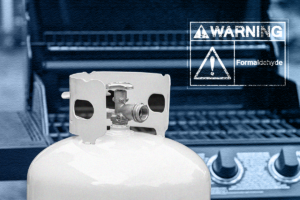



Marion County is Sen. Joe Manchin's "home turf." ...Just sayin'.